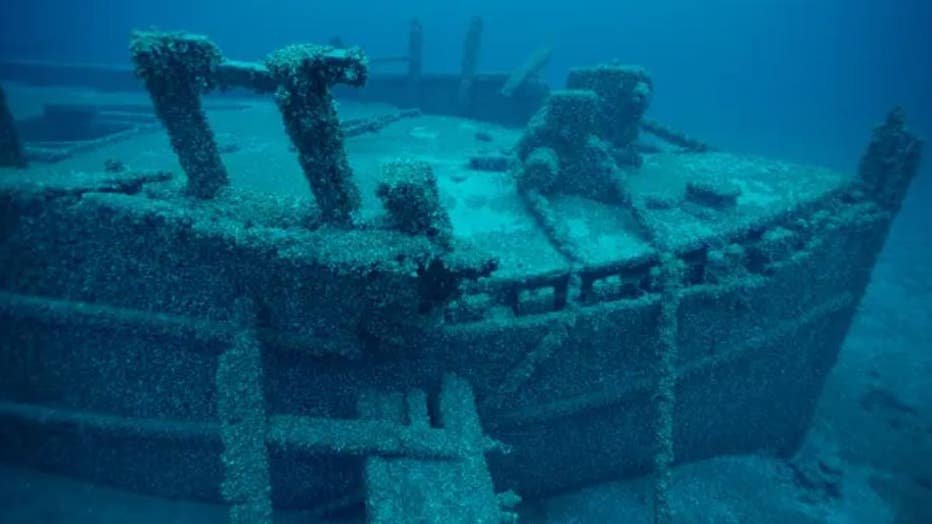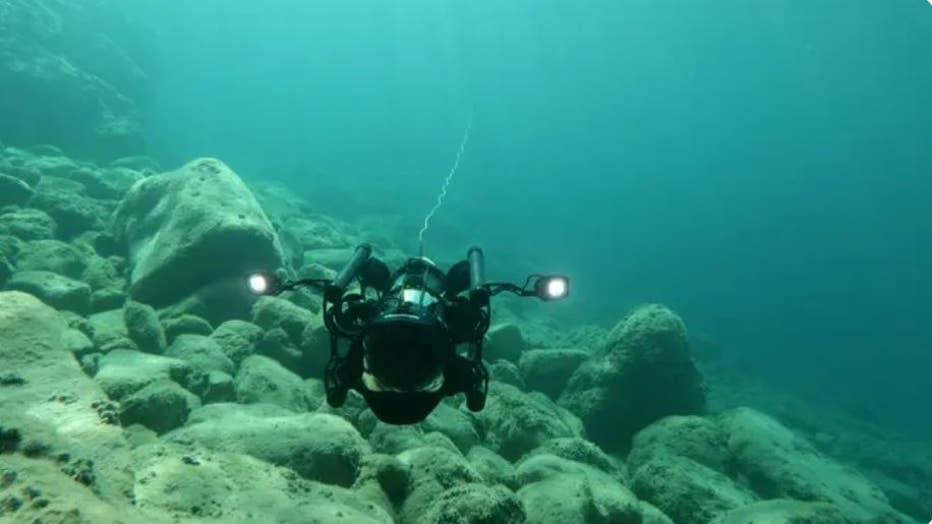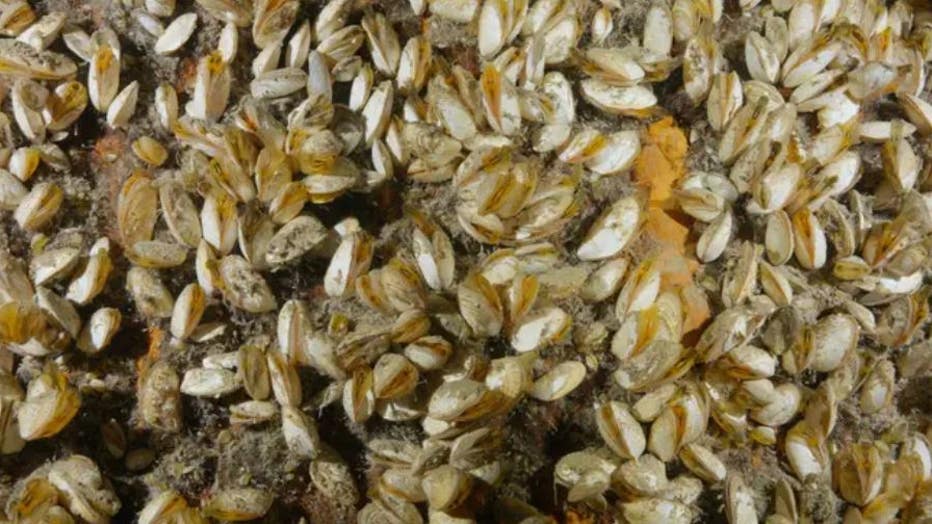How a 128-year-old Great Lakes shipwreck was found thanks to an invasive animal
Mussels cover every surface including the lake bed. (Inspired Planet Productions)
Two filmmakers making a documentary about the invasive quagga mussels, a pest with no natural predator in the Great Lakes, found something much larger than the fingertip-sized mollusk. They discovered the shipwreck of the Africa, a cargo ship that hadn't been seen for 128 years.
A century ago verus 2023
It was a dark and stormy night in October 1895. An early season snowstorm and severe fog blinded the 11 crew members of the Africa. The steamship, hauling coal from Ohio to Ontario, disappeared on the turbulent and wind-whipped waters of Lake Huron, according to the documentarians.
LOST CHAPTERS OF 125-YEAR SHIPWRECK FOUND IN LAKE HURON REVEAL AMERICA'S HISTORY OF TRADE

The broken bow of the Africa. (FOX Weather)
On a turbulent day 128 years later, Yvonne Drebert and Zach Melnick found themselves on a boat tossed by Lake Huron's waves. They were filming for a documentary about an invasive species of mussel taking over the Great Lakes.
"Just like when the Africa went down in 1895 early season storms, it was getting rough," Drebert said. "When we went out to check it out, it was supposed to be nice and calm, but of course, the wind kept coming up. We actually brought some friends with us. We thought we were just going to see a pile of rocks, so why not? But it got pretty rough, and they were feeling a little seasick. So we had to call it a day."
SHIPWRECK OF FAMOUS SS SAVANNAH POSSIBLY FOUND OFF NEW YORK AFTER HURRICANE IAN

The 50 pound drone the filmmakers used for the documentary. (Inspired Planet Productions / FOX Weather)
The discovery
The couple felt the underwater drone they were using detected a little more than a pile of rocks, so they sent their robotic camera down about 280 feet.
"So we see lots of the mussels, and that's what we normally see down there," Melnick told FOX Weather. "But then we started to see this shadow in the distance, and we're like, ‘What? What is that?’"
WRECKAGE OF US NAVY SUBMARINE FROM WORLD WAR II FOUND OFF JAPAN’S COAST
"And so we got closer and closer, and the ship just sort of appeared out of the mists of time, and it was really pretty incredible," he continued. "It got more and more definition as we got closer and closer, and all of a sudden, we could see, ‘Wow! This is a steamship, a wooden steamship.' So this is old, and it is incredibly well intact."
The filter-feeding mussels that the Adirondack Watershed Institute wrote "can wreak havoc on aquatic ecosystems" brought the two out to Huron to shed light on the invasive problem. The same destructive mussels enabled the incredible find.
REMAINS OF 1884 SHIPWRECK DISCOVERED ON MASSACHUSETTS BEACH

A closeup of the quagga mussels. (Inspired Planet Productions / FOX Weather)
"The quaggas are the reason we're able to see the shipwreck in almost 300 feet of water without any additional lights," Melnick said.
Drebert added that there are quadrillions of mussels across the Great Lakes. All the water in Lake Michigan gets filtered in just a week by the bivalves.
"But they're also responsible for making wreck identification in the Great Lakes incredibly difficult."
The couple said the ship was covered with mussels. The animal attaches itself to the shipwreck and will eventually destroy it.
The invasive exotic mussel
The Ukrainian native mussels changed the Great Lakes. A 2020 report from the U.S. Geological Survey stated that efforts to control the species in the Great Lakes cost about $500 million annually, and that is not eradicating them.
Researchers said the species probably arrived via oceangoing ships in ballast tanks – water-filled tanks that stabilize a ship. Once in port, a ship releases the water.
The creatures alter the food web by filtering the water and removing plankton, leaving little else for native wildlife to eat, according to the U.S. Department of Agriculture.
ANCIENT SHIPWRECK FILLED WITH PORCELAIN TREASURE DISCOVERED IN SOUTH CHINA SEA
"With no controls, they spread rapidly, foul boats and equipment, clog water intake, and increase costs to hydropower operations and municipal water utilities," stated a USDA report. "Even dead mussels can be a nuisance, littering beaches with shells."
Mystery solved
The drone measured the 150-foot wreck and photographed inside and around the ship that lay undisturbed for more than a century. The size and coal found around the ship allowed the filmmakers to identify the vessel as the Africa.
LOW WATER LEVELS IN MISSISSIPPI RIVER REVEAL SHIPWRECK THAT'S MORE THAN 100 YEARS OLD
An unexpected bonus, the find gave family members of the lost crew closure.
"One of the incredible things that's happened since this story has come to light just a couple of weeks ago is that several of the descendants of family members who died on this wreck so many years ago have reached out to us," said Melnick. "And we're working with those families to try to find a way to remember those sailors who had died 128 years ago.
The ship's remains are now a registered marine archeological site in Ontario.
Get the latest updates on this story at FOXWeather.com

